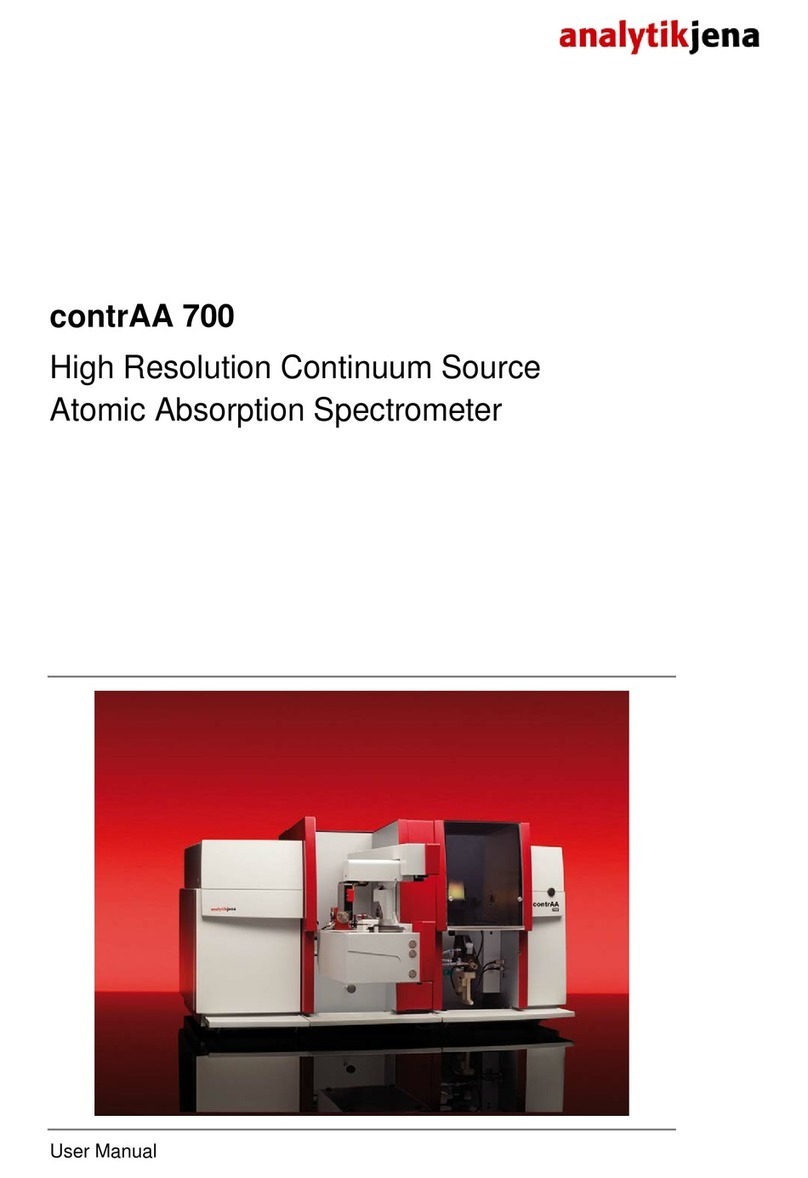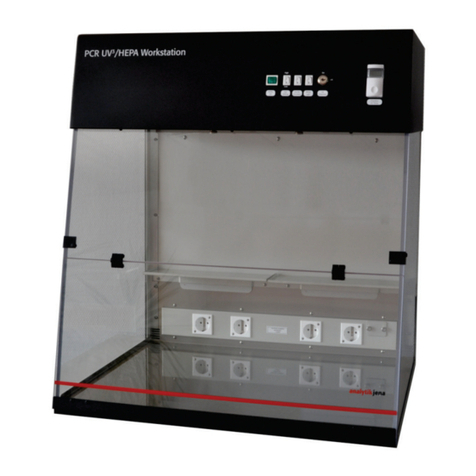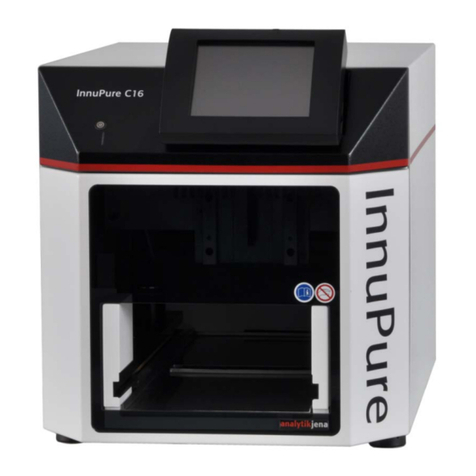
Contents
2 Issue 01/2014 contrAA 300
6.3.3 Uninstalling the autosampler AS-F/AS-FD .....................................................43
6.3.4 Installation of the SFS 6 Injection Module ......................................................44
6.3.5 Change of burner head ..................................................................................45
6.3.6 Installing the scraper at a later stage..............................................................45
6.3.7 Operation of the HPT burner head .................................................................46
6.4 Start-up of contrAA 300 with accessories ...........................................47
6.4.1 Turn-on sequence, daily start of work ............................................................47
6.4.2 Shutdown sequence.......................................................................................47
7Care and maintenance ..................................................49
7.1 Maintenance overview ........................................................................49
7.2 Basic device ........................................................................................50
7.2.1 Fuse change ..................................................................................................50
7.2.2 Cleaning the sample compartment.................................................................51
7.3 Xe lamp cooling...................................................................................51
7.4 Removing and installing the continuum source (Xe lamp)..................51
7.5 Burner-nebulizer system .....................................................................53
7.5.1 Disassemble burner-nebulizer system unit.....................................................54
7.5.2 Clean burner ..................................................................................................56
7.5.3 Clean Nebulizer..............................................................................................58
7.5.4 Clean mixing chamber....................................................................................58
7.5.5 Clean siphon ..................................................................................................58
7.5.6 Assemble burner-nebulizer system unit .........................................................59
7.5.7 Cleaning the sensor of the burner ..................................................................60
7.6 AS-F, AS-FD autosampler ..................................................................61
7.6.1 Washing the sample paths.............................................................................61
7.6.2 Washing the mixing cup of the AS-FD............................................................61
7.6.3 Replacing the canulas and guide on the autosampler arm.............................62
7.6.4 Replacing the intake tube...............................................................................63
7.6.5 Replacing the tube set for diluent and washing liquid at the AS-FD...............63
7.6.6 Replacing the dosing syringe .........................................................................64
7.6.7 Clean-up after cup overflow ...........................................................................64
7.7 Compressor JUN-AIR 6/S ...................................................................65
8Relocating the contrAA 300..........................................66
8.1 Preparing the contrAA 300 for relocation............................................66
8.2 Setting up the contrAA 300 .................................................................67
9Disposal .........................................................................68
10 EC Declaration of Conformity ......................................69






























